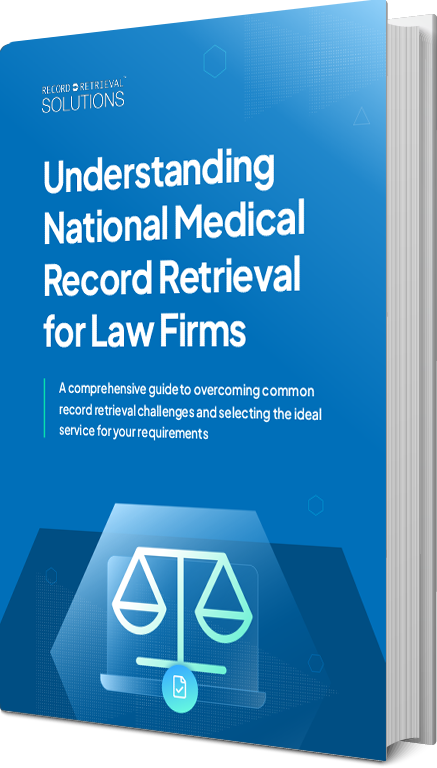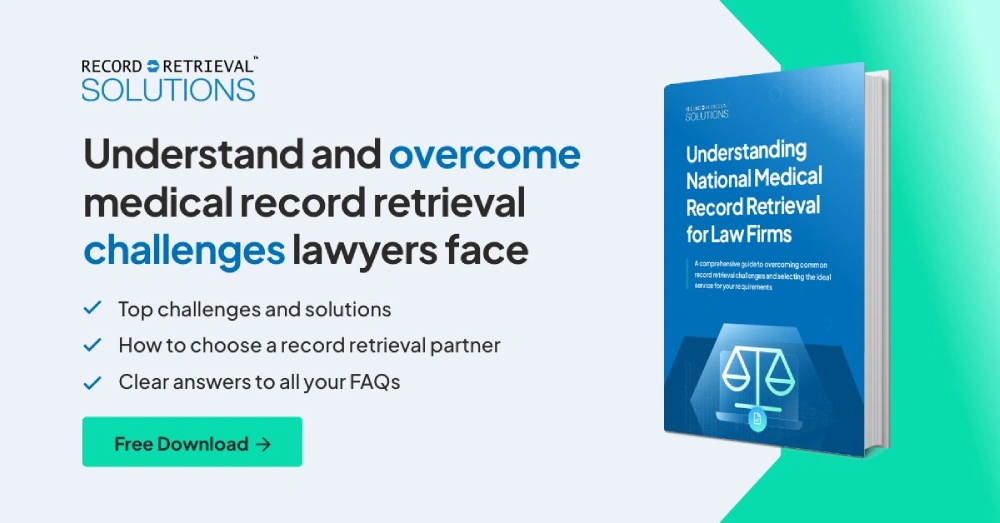In the dynamic landscape of the legal industry, law firms are constantly seeking ways to streamline their processes and enhance efficiency. One critical area that has witnessed significant transformation is record retrieval. The retrieval of medical records, in particular, has been a time-consuming and arduous process. However, thanks to the advent of advanced technology, the future of record retrieval promises a revolution that will not only benefit law firms but also reduce the turnaround time for obtaining medical records significantly.
Understanding Electronic Medical Records (EMR)
Electronic Medical Records (EMRs) are indeed digital versions of a patient’s chart that provide real-time and patient-centered information, available instantly and securely to authorized healthcare users. The shift from paper-based records to electronic formats has revolutionized the way healthcare data is captured, managed, and shared across various healthcare settings.
Key Features and Functions of Electronic Medical Records (EMR):
- Digital Format: EMRs are stored in electronic databases, allowing for easy storage, retrieval, and manipulation of patient data. This digital format replaces traditional paper-based records, reducing physical storage requirements and enhancing data accessibility.
- Real-Time Updates: EMRs are continuously updated with the latest information after each patient encounter. This ensures that healthcare providers have access to the most recent data when making treatment decisions.
- Patient-Centered Records: EMRs are designed to focus on the patient as a whole, capturing comprehensive information about their medical history, medications, allergies, test results, and treatments.
- Accessibility and Sharing: EMRs enable authorized healthcare providers to access patient information securely from different locations and healthcare settings. This facilitates seamless care coordination and ensures that all relevant providers have access to the same up-to-date data.
- Decision Support: Some EMR systems incorporate decision support tools, such as clinical guidelines, drug interaction alerts, and reminders, to assist healthcare providers in making informed and evidence-based decisions.
- Privacy and Security: EMRs prioritize patient privacy and employ encryption and access controls to protect sensitive health information from unauthorized access.
EMRs (Electronic Medical Records) work by capturing and storing health information about a patient in a digital format, making it easily accessible, manipulatable, and shareable across various healthcare settings. Here’s a breakdown of how it functions:
- Data Collection: When a patient seeks medical care, healthcare providers input relevant information into the EMR system. This data includes personal details, medical history, current medications, allergies, diagnostic test results, treatment plans, progress notes, and more.
- Digital Format: The EMR system stores all this information in a structured digital format, creating a comprehensive electronic record for each patient. This replaces the traditional paper-based patient charts and enables efficient data management.
- Real-time Updates: As patients receive healthcare services, the EMR is updated in real-time with new information. This ensures the data is current and accurate for any authorized user accessing the patient’s record.
- Interconnectivity: EMRs are designed to be accessible and shared across different healthcare settings within the same organization. For example, a hospital may have an integrated EMR system that allows various departments, such as cardiology, radiology, and pharmacy, to access and contribute to the patient’s record.
- Security and Privacy: EMRs are designed with strong security measures to protect patient information from unauthorized access and breaches. Access to EMRs is typically limited to authorized healthcare personnel involved in the patient’s care.
- Interoperability: As the healthcare industry moves towards greater interoperability, EMRs are becoming more capable of exchanging information with other healthcare systems. This allows patient data to be shared securely between different healthcare organizations, enhancing coordination of care and promoting better patient outcomes.
- Data Manipulation: EMRs allow healthcare providers to interact with the data in various ways. They can review past medical history, add new notes, update treatment plans, order tests, and view trends in a patient’s health over time.
- Decision Support: Many EMRs offer decision support features, such as clinical guidelines and alerts for drug interactions or allergies, assisting healthcare providers in making informed and safe decisions about patient care.
By digitizing patient information and making it accessible across different healthcare settings, EMRs significantly improve the efficiency, accuracy, and continuity of patient care. They also pave the way for advancements in medical research and data analytics, ultimately contributing to better healthcare outcomes on a broader scale.
Electronic Document Management and Centralized Medical Records Databases
Electronic Document Management Systems (EDMS):
- Facilitating Quick and Efficient Handling: EDMS streamlines the management of medical records by digitizing and organizing documents electronically. This allows healthcare providers to access patient information swiftly and efficiently, eliminating the need for manual searching through paper-based files.
- Reducing Costs: Going paperless with EDMS can lead to cost savings in terms of physical storage, printing, and document distribution. Additionally, it minimizes the risk of losing or misplacing crucial medical records.
- Improving Accuracy: EDMS helps reduce human errors often associated with manual record-keeping, leading to more accurate and complete patient data.
- Ensuring Compliance: EDMS can include features that enhance compliance with regulatory requirements and data security standards, protecting patient privacy and sensitive health information.
Centralized Medical Records Databases:
- Simplified Retrieval Process: A centralized database consolidates all patient records in one location, making it easy for healthcare professionals to access and retrieve the required information quickly. This saves time and allows for better patient care.
- Instantaneous Access: With a centralized system, authorized healthcare providers can access patient records from various locations, making it especially beneficial in emergencies or when patients receive care from multiple facilities.
Potential in the Legal Field:
- Expedited Discovery Process: In legal cases involving medical malpractice or personal injury, quick access to relevant medical records is crucial. Both EDMS and centralized medical records databases enable legal professionals to retrieve necessary documents rapidly, expediting the discovery process and facilitating case resolution.
- Improved Accuracy in Legal Proceedings: Electronic systems reduce the risk of errors or omissions that may occur with paper-based records, ensuring that legal professionals have accurate and complete information during litigation.
- Enhanced Collaboration: Centralized medical records databases allow legal teams to collaborate efficiently by accessing the same set of records, promoting seamless information sharing and analysis.
Overall, the adoption of Electronic Document Management Systems and centralized medical records databases offers significant benefits in healthcare settings, streamlining operations, improving patient care, and ensuring compliance. In the legal field, these technologies play a pivotal role in expediting legal processes, promoting accuracy, and enabling a more efficient resolution of medical-related cases
How Digitization Transforms Medical Record Retrieval
1. Facilitating Easy Access to Medical Records:
2. Enhancing Information Security:
3. Increasing Accuracy and Reliability:
4. Streamlining Communication and Collaboration:
5. Ensuring Compliance with Legal and Regulatory Requirements:
Digital systems can be designed to adhere to legal and regulatory requirements related to data protection and privacy, such as HIPAA (Health Insurance Portability and Accountability Act) in the United States. Compliance with these regulations is critical to avoiding legal issues and penalties. Implementing secure and compliant electronic medical record systems ensures that law firms handle and store medical information responsibly, safeguarding both patients’ rights and legal practitioners’ interests.
Overall, digitizing medical records offers significant benefits to the healthcare industry and the legal field. It enhances the efficiency, security, accuracy, and collaboration in handling medical records, thereby contributing to better patient care and improved legal outcomes in cases involving medical issues.







